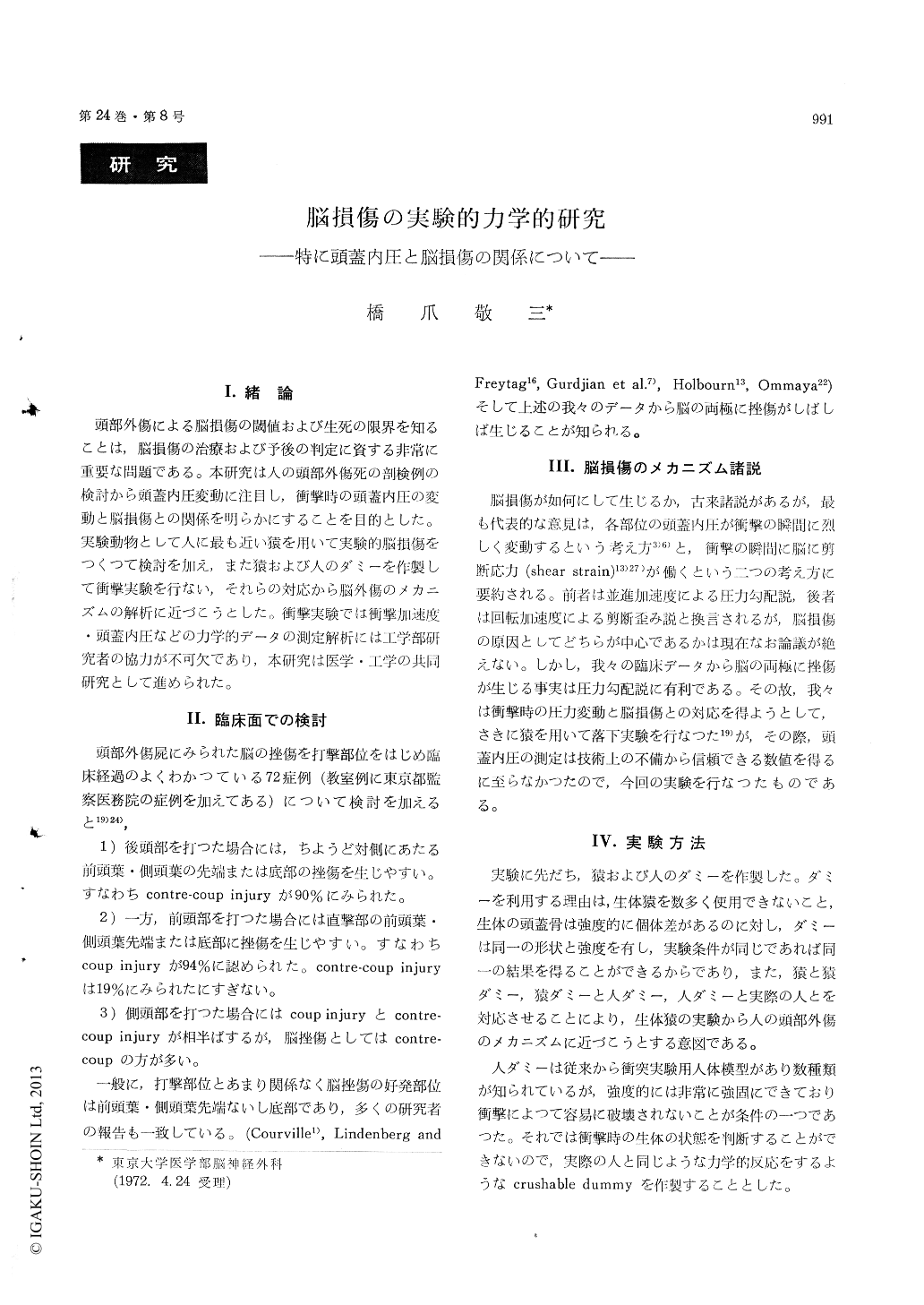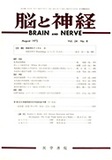Japanese
English
- 有料閲覧
- Abstract 文献概要
- 1ページ目 Look Inside
I.緒論
頭部外傷による脳損傷の閾値および生死の限界を知ることは,脳損傷の治療および予後の判定に資する非常に重要な問題である。本研究は人の頭部外傷死の剖検例の検討から頭蓋内圧変動に注目し,衝撃時の頭蓋内圧の変動と脳損傷との関係を明らかにすることを目的とした。実験動物として人に最も近い猿を用いて実験的脳損傷をつくつて検討を加え,また猿および人のダミーを作製して衝撃実験を行ない,それらの対応から脳外傷のメカニズムの解析に近づこうとした。衝撃実験では衝撃加速度・頭蓋内圧などの力学的データの測定解析には工学部研究者の協力が不可欠であり,本研究は医学・工学の共同研究として進められた。
Crash experiments were reported here to make it clarify how the traumatic brain injury occurred.
There are two theories explaining the mechani-sm of the traumatic brain injury ; one is the intra-cranial pressure gradient due to the translational acceleration, another is the shear strain due to the rotational acceleration. On this experiment, the re-lation between the intracranial pressure change and the brain injury was chiefly studied. The method was as follows ; the sled, equipped with two seats for the monkey and the dummy, was dashed aga-inst the concrete barrier, which was damped by the lead tubes. At the moment of impact, the fo-rehead fo the monkey and/or dummy ran against the target on the sled.
The most severely injured monkey among the 5 monkeys (macaca fuscata) died 40 hours after the trauma. Necropsy revealed a coup contusion in left frontal lobe and a contre-coup contusion in right occipital lobe. The mechanical data of the im-pact were : sled velosity 31.1km/h, head acceleration 284G, peak of occipital pressure -1kg/cm2 and du-ration of the impact 10 msec.
Whereas no contusions were noticed in other 4 monkeys and their peak of occipital pressure were less than -0.53kg/cm2. These results may be the experimental support to the hypothesis that the cavitation occurrs when the negative pressure arri-ves -1kg/cm2, and makes brain injury.
In the other hand, there existed some concurr-ent pathological findings, such as "intermediary contusion" along the impact line and the brain stem hemorrhage, which must be considered to be due to the shear strain.
Human dummy and monkey dummy with cru-shable heads were used in the experiment and di-scussed about their merits and their limits.

Copyright © 1972, Igaku-Shoin Ltd. All rights reserved.


